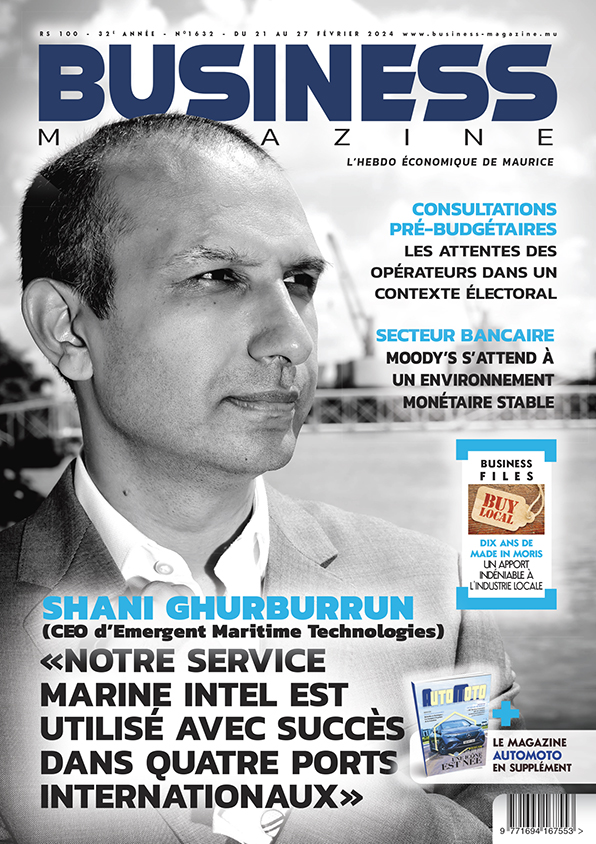A STORY OF ANTICIPATION
Share

I was at the Caudan Waterfront twice over the last month and having taken a peep at the metro station and at the recently refurbished Victoria urban terminal, I could not help but reflect on the breathtaking transformation of an area which simply did not do much to attract the positive attention of anybody, until just 30 years ago.
The story started with Yvan Lagesse, MCB’s then General Manager, musing out of his office windows, looking onto the peninsula called ‘la main’ (please have a look at a map to understand why) which, for years, used to be the focal point of our harbour. He was well aware of the ongoing transformations taking place and of their likely consequences and it gradually dawned on him that this was an area which, like many waterfronts worldwide, might well be transformed through a dynamic property uplift that would give the city a new centre of gravity, whilst freshening up its heartbeat. Numerous parties had to be convinced to come on board to get this done. Docklands had to move, the authorities had to be charmed and brought around Caudan Development Ltd, which purchased the Caudan site, was structured and set up in 1989 and an architectural master plan was entrusted to virtuoso Mico Giraud. Barkly Wharf, a museum to later house the Blue Penny stamp, a 5-star business hotel doubling up as a waterhole for the city’s businessmen, Dias Pier, aerial parking lots and, more recently, the Caudan Arts Centre added firsts and gravitas to elegance and functionality. More recently, the docks company itself started developing the areas it was left with, Park and Ride services sprouted, the metro fitted in like a glove, a charming aquarium took shape at Odysseo, an overhead pass leading to the Winners Public Private Partnership on the other side of the road connected the old to the new; giving a major facelift to Victoria Terminal, whilst preserving and enhancing the existing stone buildings on site.
This is all about initial vision and taking risks, stimulating further developments. I will freely admit that I was sceptical, in the late 80s, having seen a presentation of Giraud’s master plan, that Mauritians would respect and fit into his master view, such were the levels of debasement and devaluation of Port Louis city by then. I will remind those that are old enough of Port Louis market’s smelly predicament, of the deteriorating state of the Port Louis theatre – which closed down for 2 years of works in 2008, which is now fully… 14 years ago – or of the public toilets of Jardin de la Compagnie where I once had, like anybody else with a full bladder, to tiptoe on bricks to get across a small lake of reeking piss! However, the promoters were confident, like De l’Estrac found out when he became mayor of Beau-Bassin/Rose-Hill, that cleanliness, discipline and beauty beget more of the same, especially if you never give petty pollution, indiscipline and bad taste a chance to rear up their heads again. Caudan actually set the ‘quality’ tone for malls after the worrying precedents of the arcades…
There is a school of thought in this country that there is just too much building taking place, too much ‘béton’ everywhere. Whilst I can sympathize in some cases, I just cannot see, for example, how we can aspire to generate Rs 60 billion of tourist revenues per year or more, without hotels being built to the standards required by visitors and whilst still using the quaint, very provincial airport that existed before now. I will be told that tourists are bad news too? Well, I know they do show up for a fair amount of our imports (which we fortunately add value to, at least in that industry) but, pray, please tell me how we should pay for our staggering import appetites, if we do not earn the forex first! It is not just tourists. Mauritians too deserve improved living environments! Intuitively, I believe we are building too many shopping malls for the purchasing powers that exist here now and that we are heading for much pain and suffering, especially if we do not keep opening up the country to clean and fortunate foreigners and actually welcome them sincerely instead of whingeing and criticizing. For way beyond their means, they also bring in fresh horizons, new thinking, talent, standards that we will not be able to generate any time soon by, instead, making babies and threading them through our current education system for the next 18 years!
Sometimes, admittedly, development can go horribly wrong, be wasteful or simply be in bad taste. The Rs 18 billion harnessed for the Safe City project that works intermittently is one of those truly wasted expenditures. Some of the horrid contraptions sold to us as ‘kiosks’ by District Councils tick the ‘bad taste’ box with glee. The Ring road is squandered money. The Côte d’Or project, though of good quality, cannot for the moment be justified economically and government looks hell bent investing even more around it in order to cross-subsidise? Not that a 57-storey behemoth dubbed “World Trade Center” would do the trick! The metro arm to Côte d’Or is raising eyebrows to ceiling height, building cost and revenue per kilometre wise, but the metro overall, even if quite late in the day, may yet be of help to partly cushion the traffic overloads we keep experiencing on our road network?
Indeed, the transport issues are real and the challenges are stark! Just consider that there were 107,000 vehicles on 1,801 kilometres of roads in 1989 and that we have now reached 623,000 vehicles as at end 2021 on an estimated network of some 2,800 kilometres. This implies that vehicle density has worsened from 59 vehicles per kilometre of road, 33 years ago, to 223 now, a deteriorated situation by a factor of close to four!
Did we do enough anticipating on this one item? Hell no!
There just might be an argument that the vehicle pool of the country will level off as the 365,000 households get closer, on average, to each owning two cars per household, but the recent growth rates of vehicle registrations (3.8% in 2021) do not seem to bear this out yet. Greater affluence can do strange things to people and there is little doubt that adding Porsches, BMWs and SUVs, electric or not, cannot help as their rated speed performances cannot possibly be sated with 80 kph and even 60 kph speed limits sprouting all over.
Two further rather frightening statistics indicate how more efficient public transport needs to be. Road density that is the number of kilometres of surfaced roads we have per 100 square kilometres has reached 137, over 55% more than in 1989. This has implications for run-offs and flash floods of course. We have not reached Singapore levels yet (481), but then we do not have their discipline levels either! Additionally, and rather provocatively, each vehicle in Mauritius is now down to being able to occupy just 4.5 meters of surfaced road simultaneously, which may well explain how we are all jammed up every day on our roads… Vehicles, back in 1989, each had 16.8 meters of surfaced road to play with…
Some say dedicated bus lanes would have been more efficient. Maybe. Only as long as the buses do not stall or come to a halt, though. The metro, on a full cost benefit basis, projected against our worsening road conditions and over the long term, may well eventually make sense even if it bleeds money heavily initially. Indeed, just think what its economic viability would look like today if it had been built, say, 15 years ago, at half the cost! In another 15 years, if we do not end pussyfooting with ticket prices, as we did with water rates, which helped strangle the 24/7 ambitions we are still running after; we may yet have a credible, non-bleeding addition to our public transport system. Even though our choked-up road traffic issues may well still be around…
Which brings us back full circle to urban terminals to sustain the metro. Port Louis now looks ready. Curepipe and Vacoas next, even if Manhattan hype is certainly not called for…?















